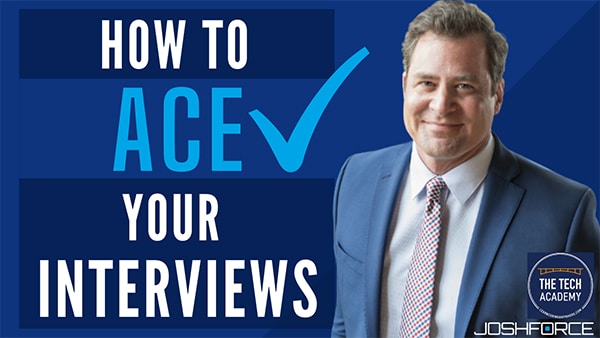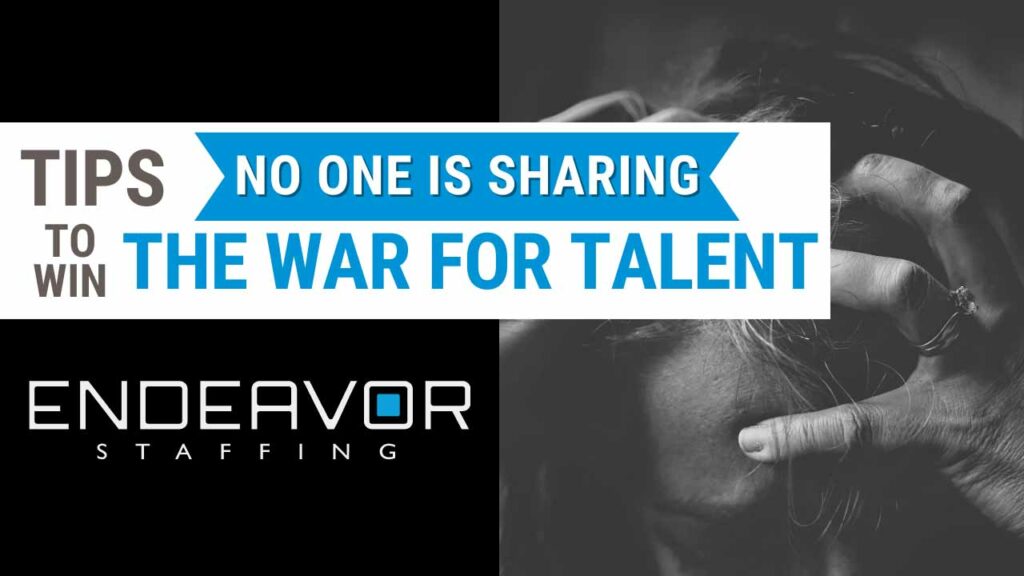How to Prepare for Your Next Video Interview
Be Seen, Be Heard, Get Hired!
You’ve prepared for this life-changing career opportunity for weeks.
- Resumé revamp — Check
- LinkedIn refresh — Check
- Network like a pro — Check
- Articulated your value and accomplishments and practiced both — Check
It’s game time! A video interview with an amazing new company. The only problem is, your video interview game may not go as expected, leaving you wondering why there’s no call back or job offer.
Maybe you’ve been working remotely already. You might have conducted calls on Zoom or Google Meet for weeks, months, or years already — but that’s no guarantee that you’re doing everything right. Being a Salesforce Recruiter I’ve personally conducted more than 1,000 video interviews and, almost everyone has room to improve their online video interview strategy.
Know the stakes!
For some, getting this right is the difference between advancing their career, making tens of thousands of dollars in additional income, or getting some much needed life-balance back in order. It might mean getting out of debt — or staying out of it in the first place. The right new job can be a life-changer and I’ve seen countless candidates blow it, and it was 100% preventable. This is my roadmap to help you de-risk the most important meetings of your career.
For those conducting the interviews, a weak video interview can be the reason the top candidate you fell in love with is going to a competitor. Don’t miss an opportunity to truly connect with a top talent candidate. They want and need to feel connected to you.
Here’s how to ensure that nothing gets in the way of you becoming a real contender for your dream job or finding the top talent your company needs.
It’s time to start thinking like a filmmaker.
Great directors and producers know that they have a rectangle and some speakers to get an audience to buy into their vision. Now, you have to make a potential candidate or employer see your vision with the same restrictions: a rectangle and some speakers.
Gone are the handshakes, the lunch dates, the workplace tours, and the sense of energy you get walking into an office. No one is looking to see how nice your shoes are or if you’re fidgeting with your hands. By moving the conversation from an office to a laptop screen, a lot of information has been lost. It’s time to start putting more of it back in.
I’ve broken this guide into 10 sections:
- Video Meeting Platforms
- Lighting
- Cameras
- Framing
- Set Design
- Audio – Microphones and Speakers
- 5 Ways to Manage Distractions
- Body Language – Avoid Doing These 6 Things
- One-Way Interviews
- What’s Next
Video Interview And Meeting Platforms
When it comes to a video interview, the most common mistake people make is not preparing and testing their video conferencing platform in advance. This can cause delays once the time for the video interview comes—or even make it so you have to cancel altogether.
There are dozens of platforms you can use for video interviews, including:
- Zoom
- Google Meet
- Spark Hire
- Skype
Some of these, such as Zoom, will require you to download software beforehand. Do this as soon as you get the invitation. Your computer or phone may require a full system update to use the software, and you won’t know if you don’t try it out earlier enough to deal with potential issues.
Once you’ve downloaded the right software, created an account, or completed any other necessary steps to use a video call platform, test it out.
What could go wrong if you don’t? Plenty. The software could have trouble recognizing your microphone, speakers, or your camera. It may default to a lower quality camera or microphone, and you’ll need to become familiar with the settings beforehand to ensure everything is ready for opening the curtain.
Regardless, you want to make sure that once the time comes to sit down and talk with a potential candidate or employer, everything is good to go.
Meagan Damrow, an HR professional from Advanced Technology Group shared
“I can’t count how many times we’ve spent 5+ minutes working with a candidate to test out the connection link and audio which then cuts into the time of the video interview. It sometimes also creates a lot of frustration for the candidate which can be very visible to the panel.”
Lighting
All truly great videos have great lighting. Yours doesn’t need to be great, but it does need to be adequate. Heavy shadowing makes it a lot easier for someone to misinterpret your facial expression or body language, too. Don’t risk it!
Here’s what you need to know about lighting:
- Two lights are better than one.
- Three lights are better than two.
- The easiest and cheapest way to ensure good lighting is to face a well-lit window. DO NOT HAVE A BRIGHT WINDOW BEHIND YOU. That’s a major no-no.
Because of compression, data is always lost on a video interview or meeting, so test your lighting for both daytime and nighttime meetings well in advance. Open up some video meeting software and take screenshots to compare. Play around with lighting and positioning until you find what works for you. Examples are coming up down below!
The person or people on the other side of the scheduled call have carved time out of their day to join the video interview. Don’t waste their time by failing to double-check that everything will work as it should.
DOWNLOAD ANY NECESSARY SOFTWARE, AND TEST IT, AT LEAST 24 HOURS BEFOREHAND.
Cameras
There are three primary cameras most people use for video interviews and meetings. Each has its own advantages and disadvantages. Here’s the breakdown:
- Your Built-In Laptop Camera
Your laptop’s built-in camera will typically be adequate if your computer is of good quality and was built within the last five years. Plus, usually, they’ll automatically connect to video conference software.
On the other hand, the built-in camera often offers an unflattering angle, low and aimed upwards. (HACK: Raise your laptop with a laptop stand, a box, or a stack of books. I’ll show my set up in just a moment.)
- A Plug-In Webcam
This is an easy upgrade to a laptop’s built-in camera and can come in a variety of quality standards.
Because I hook my laptop up to a larger monitor, I use a plug-in webcam, and I appreciate the improved quality of the camera over my older MacBook Pro’s built-in. Many webcams will also come with built-in microphones and speakers which can help tackle audio issues as well.
These webcams are generally designed to be flexible, so you can mount them directly above the image window of the person you’re talking to. This makes it seem as though you are looking right at the interviewer or candidate during the video call.
However, a plug-in webcam will use up a USB port to operate, and your video conferencing software may not automatically detect it right away. Not to mention, it requires you to invest in additional equipment. That said, it’s often worth it.
- Your Smartphone Camera
There’s nothing wrong with using your phone for a video interview meeting. They’re portable, allowing you more flexibility to schedule meetings, and the lenses and color software in newer phones allow for exceptional detail and clarity.
But remember: When using a phone for a video interview or meeting, it is an absolute must that it be hands-free. Not only should you take notes, but you don’t want the other participants to get seasick or distracted as your caffeine tremors wiggle and jiggle the camera around, no matter how much you try to stay still.
Without a tripod or stand, you’ll be betting your career on how steady your hand is, and you’re not even a surgeon.
DO NOT USE A PHONE WITHOUT A TRIPOD OR STAND.
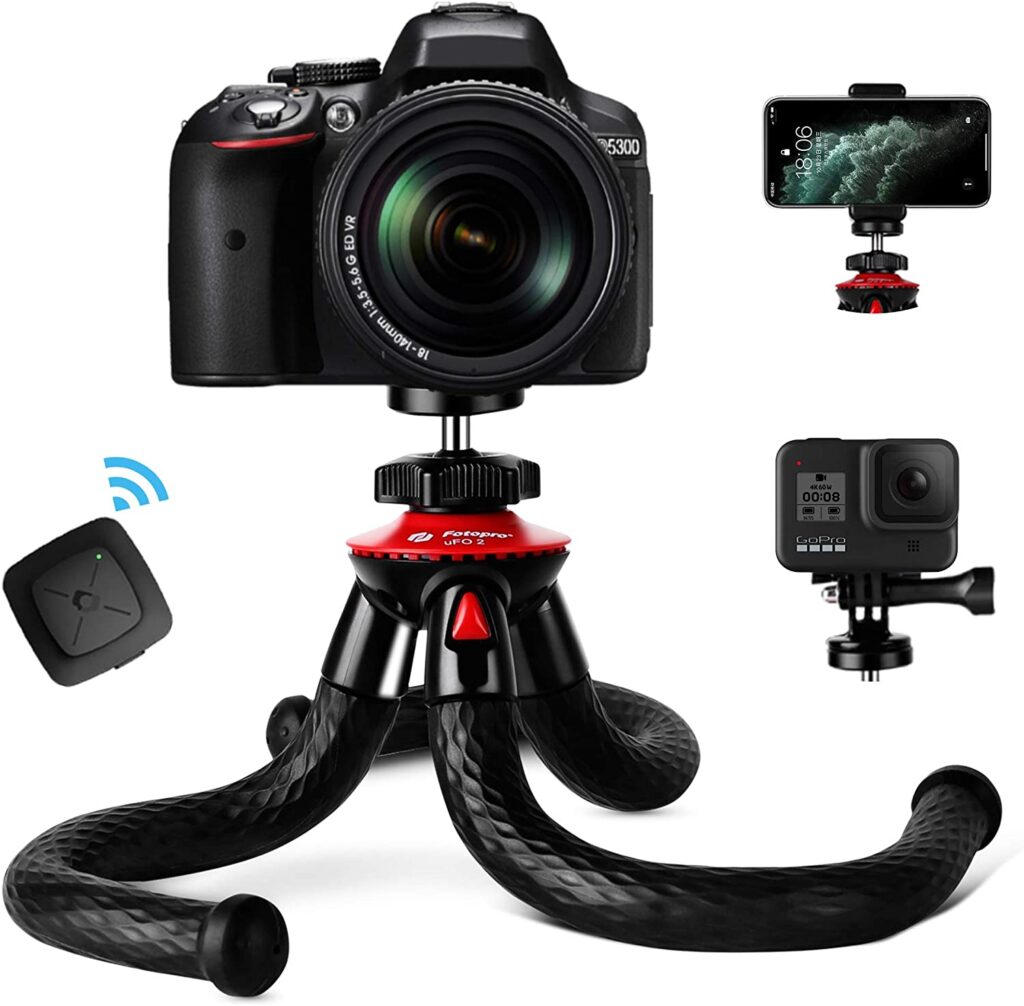
I’m a huge fan of small flexible tripod stands and use them regularly. You can wrap it around your steering wheel or desk for a convenient video interview in your office, car, or home. You can even stand your phone at eye level on your desk to provide a more natural visual with less neck strain.
Tripod for phone stability during video interviews or meetings.
Framing
Your video meeting software is working, you’re well lit, and you have a good quality camera. Before we get into audio, we are going to stick with the visual side of a video interview.
To do that, we need to make sure that whatever’s in the frame (your rectangle) is in the right position, and that there’s nothing in the background that will harm anyone’s perception of you. This is called framing.
Framing is the easiest thing in the world if you know what to do. However, most people blow this part, which it’s too bad. There’s information to be shared such as your breathing and what you do with your hands, all of which can help to convey confidence and build trust when communicating with others that is often left out due to sitting too close to the lens or positioning cameras that hide too much of our body.
Framing well is 100% free and requires no investment beyond a couple of minutes of practice.
The shortcut is to think, “Newscaster at a news desk.”
Here’s Walter Cronkite showing us how it’s done.

Your head and at least half of your upper body are visible. There’s a small space (about 5-10% of total height) between the top of your head and the top of the frame. By showing more of yourself, you’ll be able to bring your hands into view, the rise and fall of your breath, your shoulders if you shrug (or relax). You know…that whole body language thing that helps us communicate and build connections to others.
Do this:
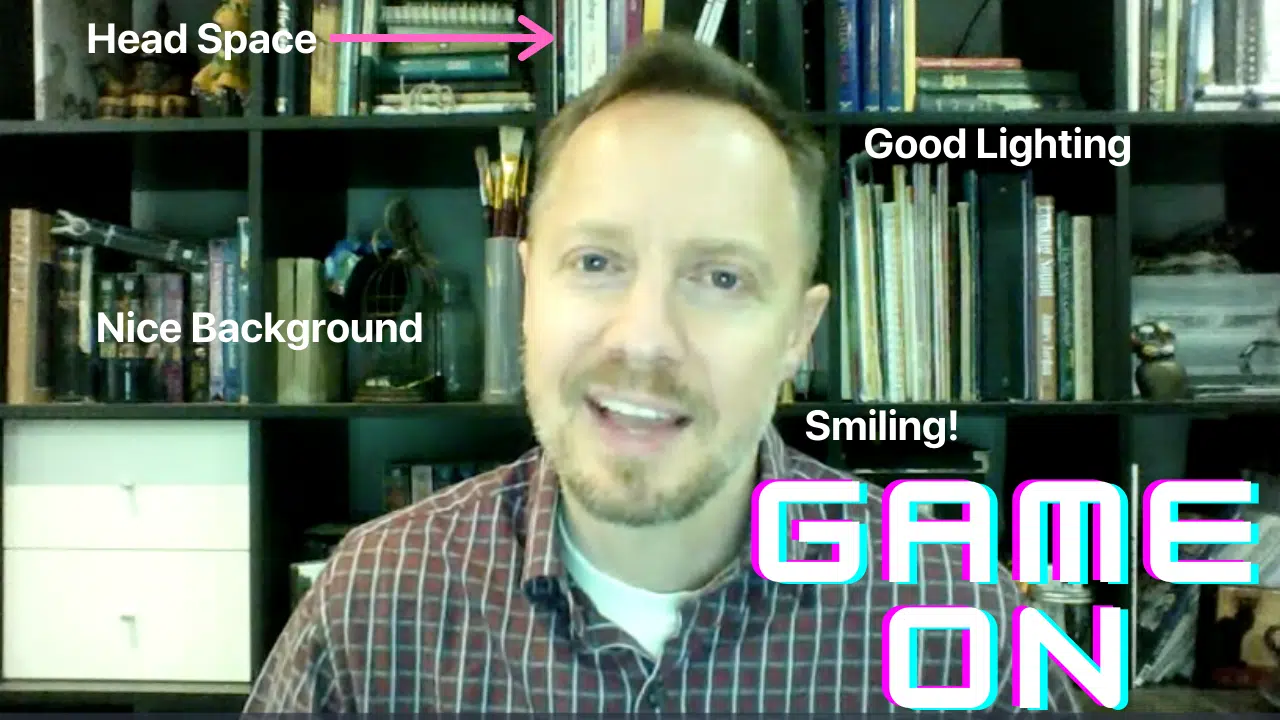
Don’t do this:
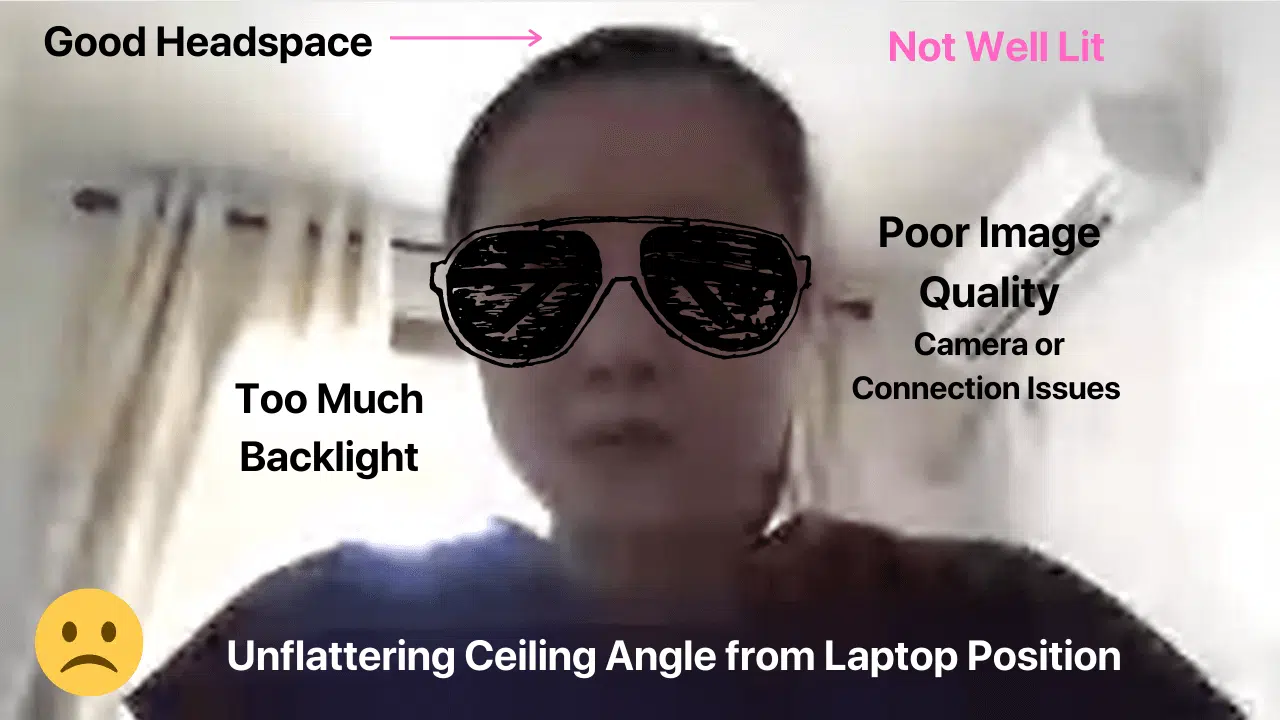
DO NOT POSITION YOUR CAMERA TO THE SIDE OF YOUR HEAD or look at the other participant on a different monitor. It’ important to face the person as though they were in the room with you. To help, position video window of the person you’re talking to as close to the lens of the camera as you can. Eye contact is key to bonding and communication, and this is the only way to get even close.
Set Design
Where you sit and what’s in frame with you matters. If you’re in your home office and it’s messy, clean it. You wouldn’t throw your ugly bathrobe on the back of a chair in a video interview room, so don’t do it online either.
It’s also perfectly fine for some of your personality to shine through. A family photo, an award or framed degree, or anything demonstrating an accomplishment can be a quick way to find common ground and develop rapport.
The big rule is DO NOT HAVE YOUR BED IN THE BACKGROUND. If you’re in a small apartment and options for settings are limited, good use of lighting can make up for this, or just find a blank wall somewhere.
Remember, DO NOT AIM YOUR CAMERA UPWARDS AT BRIGHT LIGHTS IN THE BACKGROUND. This is a rookie mistake and will completely botch your presentation.
Green Screens and Digital Backgrounds
These can be terrific, especially if there’s a giant mess behind you and there’s no time to clean it up, or if the only place you can shoot is your bedroom. They can also be a terrific way to brand yourself with custom backdrops that highlight certifications and accomplishments.
Warning: An overly pixelated background or the wrong background selection can both work against you. To ensure success with digital backgrounds, follow these tips:
- Don’t use GIFs, like flying through the clouds or crashing waves in the background. While they may show off your personality, the movement can be distracting. Remember NEWSCASTER at a desk! No crashing waves unless you’re reporting on Winter Storm Watch .
- You must be well lit. If not, the software can’t distinguish you from the background. You could end up with a fake bookshelf or the Golden Gate Bridge hiding your face.
- Watch what you wear. I know your lucky shirt is Kelly green, but you’ll be the invisible candidate or interviewer if you wear it against a digital background and haven’t selected the right preferences.

What to Wear
Keep in mind that what you wear during a video interview is part of your set. A general rule is to wear whatever you normally would to this kind of meeting if it was in-person. Would you typically put on a button-up shirt? Then stick with that. Just make sure everything is ironed and clean. Fancy or expensive isn’t generally required—clean and pressed is.
Psychologically speaking, dressing well for an interview does have an impact on your own confidence. Just make sure it’s appropriate for the company and the role. Interviewers will assume this is you at your best, so if it isn’t, make it so. I’ve been seeing well paid professionals showing up to video interviews in sweats. For those of you who are getting a bit too comfy in the modern world, YOU ARE KILLING YOUR CHANCES when you don’t dress the part. Pants and a shirt with a collar or blouse folks. That’s the minimum! Check out our Pant’s Guarantee
AUDIO
While it’d be great to just make faces into a camera and get a job, words matter, and your ability to hear and be heard can be compromised by the wrong gear. How many times have you had to rewind a show or movie to hear what the actor said? Annoying, right? Poor audio always is.
Here are your main options:
- Built-In Mics and Speakers
All modern laptops and phones have built-in mics and speakers, as do many desktops and webcams. But that doesn’t necessarily mean that’s what you should use for a video interview.
Like built-in cameras, the quality can vary greatly, and built-in microphones are typically multidirectional and pick up lots of ambient noise. This can make it difficult for other participants to hear you clearly, or it may sound as though you are far away.
Neither is a good thing.
Be sure to test the quality of your mic by recording yourself—not just on your computer or phone, but through your video conferencing platform of choice. The compression will affect your audio during the call, and you need to know if that will be a problem.
- Headphones
A great alternative to built-in options is to use headphones with their own microphone. Any plug-in or wireless earbuds can often improve the sound quality both ways. As always, you’ll want to test this.
WARNING!!! BE VERY CAREFUL WITH PLUG-IN EARBUDS.
The wired microphone often ends up mic side down on your shirts, creating an extremely muffled audio. DO NOT let this derail your meeting with other participants too kind to say anything. Instead, tape the wire to your shirt with the mic side out.
And if you’re thinking about using your $300 noise-canceling headphones, start pumping the breaks on that idea. Unless you’re interviewing for a DJ spot in Ibiza or in a noisy airport (do those exist anymore?), seek an alternative system.
Golden Rule: If you wouldn’t wear it in a family photo don’t wear it in an online interview.
- Plug-In Microphone
If you’ve tested your gear and it leaves something to be desired, or if you know that any job you take will be heavy on the online meetings, consider investing in both external plug-in speakers and a plug-in desktop microphone.
For as little as $50 for each, you can up your audio quality tenfold.
Imagine you’re the hiring manager and you just got off a meeting with a candidate who was great for the position, but a little hard to hear. Then, you jump on for another meeting with another candidate. This one has invested in a quality mic, there are zero technical issues, and they’re just as good a candidate as the one before. Not only that, but this job will be meeting-heavy and require a lot of interaction with clients from around the world where data may already be compromised.
Which one would you be more likely to hire? Now imagine you’re the candidate with the better mic. The focus is going to be squarely on you and the fact that you didn’t settle for cheap hardware. Remember, for some, these are $10,000, $20,000, or even $100,000 conversations. Spend the $50-$200 for a quality microphone and you’ll never go back. Especially if you’re on meetings all day.
You can also use KRISP, a software that eliminates all outside noise except for your voice. I can personally vouch that it works incredibly well. There are both desktop and phone versions. Best of all, you can try it out for free.
Here’s my setup:

Manage Distractions
Your video interview is going great. You’re making solid connections with the person on the other end. Everyone is in sync.
Then, all of sudden: bark, bark, bark. Or, “Mommy, daddy, I’m hungry!”. Your neighbor fires up his leaf blower right outside your window. Your phone pings and buzzes with notifications.
Momentum lost. Game blown.
“Ha. Sorry……where was I???“
This is not an exaggeration. It can take minutes, not seconds, to get back in the flow as your brain attempts to get you back on track and some, well…they never do.
So, here are the 5 rules for managing distractions:
- Turn off all notifications on your desktop from the main system, but check software, such as Slack, that may require you to turn off notifications within the app.
- Close all unnecessary windows and software on your computer.
- Put your phone on Do Not Disturb.
- Feed your kids, walk your dogs, and get an extra set of hands to look after them before your meeting.
- If you don’t have help and expect some interruptions, it’s not the end of the world. Simply let the interviewer or interviewee know your situation early on. Just say, “Before we begin, I need to let you know we have a new hound dog, 4 year old twins and we’re remodeling our kitchen. I’m sorry if this interrupts us and wanted to give you a heads up.”
Something like this can go a long way to setting expectations and acting professionally.
Loud noises, kids, neighbors, and pets aren’t the only things that can be distracting during a video interview. Watching a candidate read their answers or stare down at their desk as they scribble notes from the meeting can also get in the way of having the best meeting possible.
If you type notes during meetings, let people know in advance. I usually say, “I’ll be typing up a lot of notes from our meeting today. Just letting you know so you don’t think I’m writing emails.”
Personally, I love it when candidates take notes during meetings. In fact, I get pretty worried when they don’t.
Body Language
Lights, Camera, ACTION!
I’m a huge fan of the study of body language, micro facial expressions, and being able to articulate what we most often interpret as feelings. This includes signs of deception, self-soothing, impulse-control cues, and more. I’ll save most of that all of that for a different article.
Instead, here are 6 common behavioral pitfalls that can sour even the best online video interviews.
AVOID THESE BEHAVIORS LIKE THE RONA!
- Spinning or Rocking in Your Chair.
This is self-soothing behavior, and most people who do this aren’t even aware of it. So start paying attention to yourself during calls. If you spin your chair back and forth or rock, and it’s an old habit, change your chair to a wheelless four-on-the-floor model.
- Clicking Your Pen
Don’t. Just…don’t. Switch to a click-less pen if you have to. I used to keep some basic Bics in my office and force pen trades with employees who were frequent clicking offenders. Over time, it worked.
- Eating Food or Chewing Gum
No one cares if it’s your lunch break. If you can’t control your need to feed during an important interview, people will assume the meeting isn’t important to you.
- Reading Your Notes Verbatim and in an Obvious Way
NEVER READ PREWRITTEN ANSWERS.
You’re not giving a statement to the press like a politician—you’re having a conversation. It’s okay to have notes that help you during the meeting, but don’t squint at your second monitor and read the company’s description of itself to someone who works there or read from your resumé.
- Not Smiling
I can’t tell you how many people I’ve talked to that were loath to return a grin until they warmed up a bit. People can even hear if you’re smiling without seeing it and people like smiles. It relaxes the atmosphere and lubricates communications between strangers. You don’t have to be ridiculous—just don’t forget to smile when you meet someone for the first time and ask how they’re doing, sincerely. It will also put you in a good mood. Facts!
- Talking for Too Long
Superbowl ads stay under 60 seconds. When answering questions on a video call, so should you. Take a breath and see if the interviewer already picked up what you were putting down so the conversation can keep going. Serial offenders think they get good at interviews because they’ve had so many. Often, they’ve had so many interviews because they talked their way out of so many jobs by talking to long. Get in, answer, give an example, check for understanding and get out.
One-Way Video Interviews
One-way video interviews are when a candidate responds to prewritten questions using recorded video of themselves. There are a number of platforms in use such as HireVue pick. I use Spark Hire for its features and affordability.
Some candidates flat out refuse to participate in these types of screenings. They’ve cited it’s too impersonal. I think it’s a mistake to dismiss them or assume it is the deciding factor in a job offer.
It’s not.
One-way videos are an easy way to not only protect candidate and hiring managers time, but they usually allow a candidate to showcase the best of themselves. First of all, you can perform the video meeting anywhere and at any time convenient for you. No scheduling conflicts or unnecessary delays to getting through to the next stage of video interviewing.
Also, many of these platforms allow candidates to re-record their responses several times. That’s an opportunity you will never have in a live video interview. Additionally, by accepting the video interview, you immediately demonstrate your keen interest in the role. It may not be comfortable if you’ve never done it before, but this type of video interview is not going away.
It’s wise to be on the cutting edge and getting experience with them before some of your competition.
The reality is, people forget people. When a manager is interviewing 6+ candidates per day for weeks on end filling multiple roles, having a recording allows them to refresh their memory, and even compare candidate responses side by side instead of having to rely on their notes or their imperfect memory. This is one way to not be forgotten.
DO NOT FORGET TO SMILE and DO NOT FORGET TO SHOW INTEREST, PASSION, and GRATITUDE on the recording. A little rehearsal and practice will improve your jitters once it’s showtime.
What’s Next
Hopefully, you’ve recognized that it’s not difficult to improve your video interviews and meetings. The problem is it’s too easy to get it wrong and potentially derail some of the most important conversations you’ll have all year—or even in your entire lifetime.
Following the above recommendations will help you look polished, professional, and tech-savvy. More importantly, your conversations will flow more naturally and allow you to come as close to a real face-to-face meeting as possible.
It will also help any friends and family you stay in touch with feel more like they’re in the room with you, and that’s always a good thing.
If you made it through the entire article about how to improve your video interviewing, congratulations! But don’t stop just yet. While it’s still fresh in your mind, do an audit of your equipment including audio tests and some screen captures of yourself to quickly determine how you can make a dramatic impact in no time at all.
For more information about how to hire or get hired like your career depends on it, subscribe to JoshForce or sign up for new article notifications.


